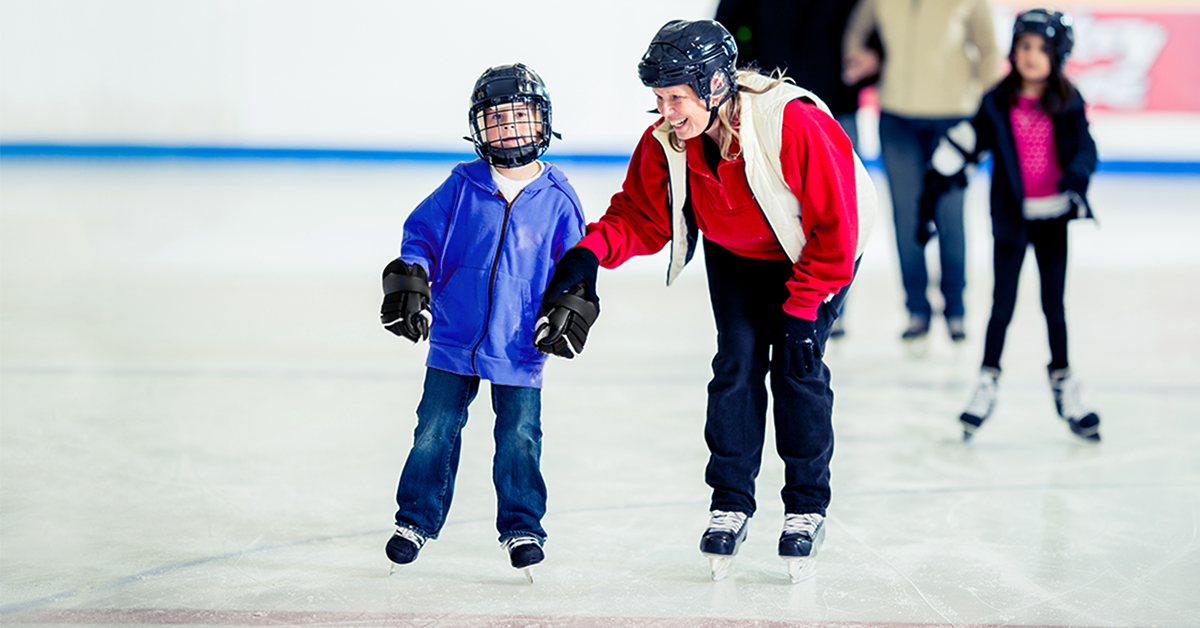Skating with kids is a fun, exciting activity that brings families together and encourages healthy outdoor exercise. Whether you’re hitting the ice or rolling on roller skates, it’s a great way to spend quality time and create lasting memories. However, just like any physical activity, skating comes with its risks, especially for young children who are still learning how to balance and control their movements. The good news is that with the right safety precautions, you can ensure that everyone stays safe while enjoying the thrill of skating.
In this article, we’ll cover the best safety tips for skating with kids to help you protect your little ones and ensure a fun experience for the whole family
1. Wear Proper Protective Gear
The most important safety measure when skating with kids is wearing the appropriate protective gear. Even if kids are just starting out, safety gear can minimize the risk of injury and make them feel more secure as they learn.
Essential Gear for Kids:
- Helmet: A well-fitted helmet is the most important piece of protective equipment. It helps prevent head injuries in the event of a fall or collision. Make sure the helmet is specifically designed for skating and fits snugly without wobbling.
- Knee and Elbow Pads: Protect your child’s joints from bruises, scrapes, and more severe injuries by using knee and elbow pads. These are essential for kids learning to skate, as they tend to fall frequently.
- Wrist Guards: Wrist injuries are common when kids use their hands to break a fall. Wrist guards protect against sprains or fractures by stabilizing the wrist and minimizing impact.
- Padded Shorts: If your child is prone to falls, consider padded shorts that protect the hips and tailbone. These can prevent painful bruising when they lose their balance.
By ensuring that your child wears the right protective gear, you reduce the likelihood of injuries and help them skate with more confidence.

2. Choose the Right Skates
Choosing the right skates is crucial for both safety and comfort. Skates that are too loose or too tight can affect balance and increase the chances of falling. Ensure that your child’s skates are the right fit and provide enough support for their skating style.
What to Look for in Kids’ Skates:
- Proper Fit: Skates should fit snugly around the feet and ankles. There should be no extra space in the toes, but your child’s feet shouldn’t be cramped. Properly fitted skates give your child better control and stability.
- Ankle Support: Skates with good ankle support are particularly important for beginners. They help keep the foot stable, reducing the risk of sprains and promoting better balance.
- Quality: Invest in high-quality skates that are durable and well-constructed. Poorly made skates can increase the likelihood of accidents and discomfort.
- Skate Type: Make sure you’re choosing the appropriate skates for the activity. Ice skates are different from roller skates, so be sure your child is equipped for the surface they’ll be skating on.
3. Start with a Safe Location
The location where you skate can significantly impact your child’s safety. Whether you’re at an indoor rink, a smooth outdoor path, or a local skating park, make sure the environment is appropriate for beginners.
Choosing a Safe Skating Environment:
- Smooth Surface: Skating should always take place on a smooth, clean surface. Whether it’s an ice rink or a smooth pavement, rough or cracked surfaces increase the chances of accidents.
- Low-Traffic Areas: Choose areas where there are fewer people skating, especially if your child is still learning. Busy rinks or skate parks can be overwhelming and dangerous, particularly for younger skaters.
- Supervision: Always supervise your child while they skate, especially if they are new to the activity. Even if they’re skating on a safe surface, they still need guidance and support.

4. Teach Basic Skating Skills
Before allowing your child to skate freely, take the time to teach them some basic skating skills. The better they understand the fundamentals, the more likely they are to stay balanced and safe on the ice or pavement.
Important Skills for Kids to Learn:
- Balance and Posture: Teach your child to bend their knees slightly and keep their body centered over the skates. This will help them maintain better balance and avoid falling backward.
- Stopping Techniques: It’s crucial for kids to learn how to stop safely. Teach them how to perform basic stopping techniques such as the “snowplow stop” for ice skating or the “T-stop” for roller skating. These methods allow them to slow down gradually and avoid collisions.
- Turning and Navigating: Make sure your child knows how to turn safely and navigate around obstacles on the rink or path. Encourage them to look ahead and be aware of their surroundings to avoid running into other skaters or objects.
5. Stay Within Their Skill Level
As much as kids may want to try more advanced tricks or speed around the rink, it’s essential that they stay within their skill level. Pushing too hard too fast can lead to falls, collisions, and injuries.
How to Avoid Pushing Kids Too Hard:
- Start Slow: Allow your child to build confidence by starting with slow, controlled movements. Gradually increase the difficulty as they gain more experience.
- Avoid Speeding: Speeding can be dangerous, especially for beginner skaters. Teach your child to skate at a comfortable pace where they can maintain control.
- Encourage Rest Breaks: Skating can be tiring, and kids are more prone to accidents when they’re fatigued. Schedule regular breaks to rest and recharge so they can keep skating safely.
6. Be Aware of Surroundings
Skating in a public place like an ice rink or roller park means there will be other skaters and obstacles around. Make sure your child is aware of their surroundings and understands how to avoid collisions.
Safety Tips for Navigating the Rink:
- Avoid Bumping Into Others: Encourage your child to skate with enough space between themselves and others. Bumping into someone can cause them to lose their balance and fall.
- Look Where You’re Going: Teach your child to always look ahead while skating. They should avoid looking down at their skates, as this can lead to collisions or tripping.
- Yield to Faster Skaters: More experienced skaters will be moving faster, so it’s important to remind your child to yield the right of way and be respectful of others’ space.

7. Make Sure the Weather is Safe for Skating
For outdoor ice skating or roller skating, weather conditions play a big role in ensuring a safe experience. Extreme cold or hot weather can affect both the skates and the surface, so always check the forecast before heading out.
Things to Consider:
- Ice Conditions: If you’re skating on outdoor ice, make sure the surface is thick and solid enough to support skating. Don’t skate on ice that looks cracked or uneven, as this can be dangerous.
- Weather: For roller skating, avoid skating in wet or rainy conditions, as this makes surfaces slippery and increases the risk of falls.
- Dress Appropriately: For cold weather, make sure your child is dressed in layers to stay warm, but avoid bulky clothing that restricts movement. In warmer weather, wear breathable clothing to stay cool and comfortable.
8. Supervise and Lead by Example
As a parent or guardian, your child looks to you for guidance. Lead by example by demonstrating good skating practices and staying calm in situations where your child might feel nervous or unsure. Active supervision is key, especially for younger kids who may need extra help on the rink.
Supervision Tips:
- Stay Close: Keep a watchful eye on your child as they skate, especially if they are still learning. Be ready to step in if they need assistance or help with a fall.
- Set Boundaries: Make sure your child knows the rules and boundaries of the skating area. Enforce these boundaries so they don’t take unnecessary risks.
9. Encourage Positive Attitudes and Patience
Finally, it’s important to keep the experience fun and positive. Learning to skate can take time, and kids may get frustrated or discouraged. Be supportive and patient as they progress, and celebrate their successes, no matter how small.
Keeping the Fun Alive:
- Be Encouraging: Offer praise and encouragement to keep your child motivated. Ice skating or roller skating should be about having fun, not just achieving perfection.
- Take It Slow: Everyone learns at their own pace, so don’t rush your child. Let them enjoy the process and build their skills over time.
Conclusion
Skating with kids can be a fantastic bonding experience, but safety should always come first. By following these essential safety tips, including wearing the right gear, teaching basic skills, supervising closely, and keeping a positive attitude, you can ensure that your child has a fun, safe time on the rink. With the right precautions, skating can become a beloved family activity that your kids will enjoy for years to come.

